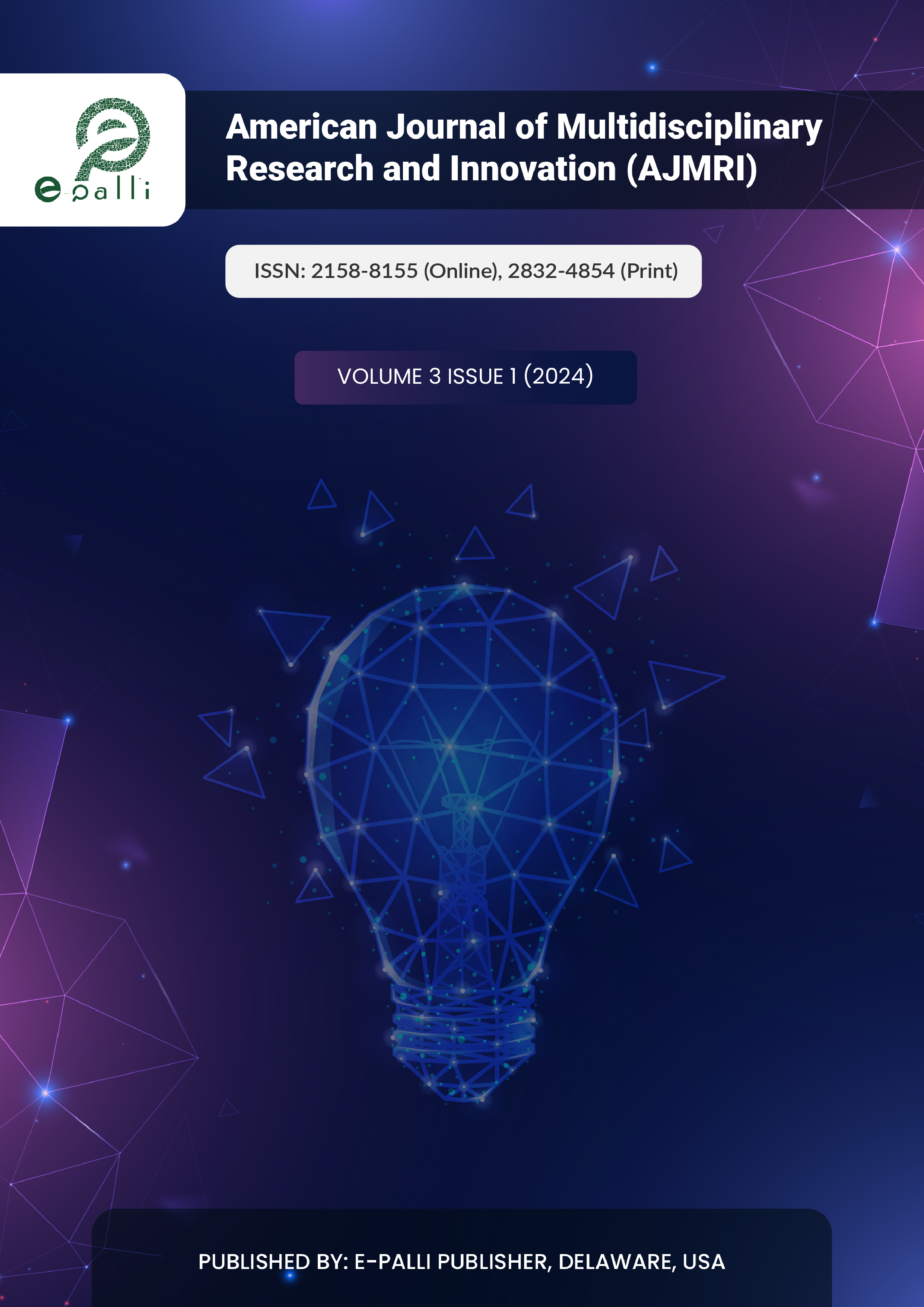Congolese Student Comprehension of CMMW: A Stumbling Stone to the Development of L2 Learners’ Acquisition
DOI:
https://doi.org/10.54536/ajmri.v3i1.2361Keywords:
Comprehension, Teaching Strategy, Learning and Application of CMMW, Lingala Native SpeakersAbstract
It is necessary to use Chinese Mandarin measure words (CMMW) when counting objects and actions with numbers, demonstratives, nouns and verbs. Compared to Mandarin, Lingala generally has no measure words. According to Lado’s (1957) contrastive analysis hypothesis (CAH), linguistic elements different from the learners’ native language create difficulties for them. This study uses an empirical research method to investigate L2 learners’ use of CMMW and the problems they encounter. In the empirical study, questionnaires and proficiency tests were used to collect information from the participants. A CMMW test was also designed to collect data on the application and use of different CMMW by Lingala native speakers. The results of the empirical study showed that CMMW are a difficult task for Lingala native speakers. The results of this study also showed that although Lingala native speakers have difficulties in using most of the CMMW categories, some measure words are easier to use than others. The Congolese students have stronger skills in weights and measures, collective nominal measure words and temporary nominal measure words. The main reason for the difficulties lies not only in the cross-linguistic differences between Chinese Mandarin and Lingala, but also in the complexity of some CMMW. After finding out the difficulties faced by the Congolese students learning CMMW, some preliminary suggestions for teaching CMMW in second language learning and application were proposed.
Downloads
References
Allen, J. P. B. (1984). Corder, S. Pit. Error Analysis and Interlanguage. Oxford: Oxford University Press, 1981. https://doi.org/10.3138/cmlr.40.4.649
Dong & Zheng. (2007). Analysis of Chinese quantifiers by the native American and European English speakers in ‘Corpus of Chinese Interlanguage’. International Chinese Language Teaching & Learning Report, (3), 38-44 journal-cn_detail_thesis/02012102356731.html
Fries, C. C. (1945). Teaching and learning English as a foreign language. https://eric.ed.gov/?id=ED071477
Gass, S. M. (1988). Integrating research areas: A framework for second language studies1. Applied linguistics, 9(2), 198-217.
Guo, X. & Han, M. (2007). Research on learning for foreign students to study Chinese measure words. Journal of Changchun Normal University (Humanities and Social Sciences), 26(3). 83-87. https://doi.org/10.3969/j.issn.1008-178X.2007.03.022
Guo, X. (2008). Analysis on the cause of error made by foreign students in learning Chinese classifiers. Journal of Changchun Normal University (Humanities and Social Sciences), 27(1), 90-93.
Hughes, A. (1980). Problems in Contrastive Analysis and Error Analysis. Institute of Education Sciences.15. https://eric.ed.gov/?id=ED192573
Hammerly, H. (1982). Contrastive phonology and error analysis. IRAL., 20(1), 17-34. https://doi.org/10.1515/iral.1982.20.1-4.17
Lado, R. (1957). Linguistics across cultures. Ann Arbor: University of Michigan Press.141.
Liang, Y. C. (2009). Do L2 Grammars Go Beyond the L1 and L2 Input?. In Proceedings of the 3rd conference on Generative approaches to language acquisition North America (GALANA). Somerville, MA: Cascadilla Proceedings Project (pp. 139-147).
Selinker, L. (1972). Interlanguage. IRAL. 10. 209-241. https://doi.org/10.1515/iral.1972.10.1-4.209
Selinker, L. (1969). lnterlanguage, IRAL. 3. 114-132. https://doi.org/10.1017/S0272263100004186
Wang, H. (2004). The categorisation of measure words and teaching Chinese as a second language. Journal of Jinan University (Humanities and Social Sciences), 2(109). 113-116. https://doi.org/10.3969/j.issn.1000-5072.2004.02.030
Downloads
Published
Issue
Section
License
Copyright (c) 2024 Quellon Tavilat Lepari Nzamba Yassanguila, Chang-Hai Chi

This work is licensed under a Creative Commons Attribution 4.0 International License.



